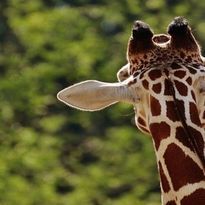In Mosa Mack’s Plant and Animal Structures Unit, students are led through a progression of three inquiry lessons that focus on the comparison of plant and animal structures and functions. The unit culminates with an Engineering challenge in which students use biomimicry to design a solution to a human problem.
- Lesson 1

Solve: Killer Giraffe Mystery + Vocabulary Mind Map
Students contextualize Plant and Animal Structures vocabulary in a Mind Map before helping Mosa Mack solve the mystery of how the giraffe helps the survival of the Acacia tree. By the end of The Solve, students discover that plants and animals have structures and functions that support survival, growth, and reproduction. (75 mins)
- Lesson 2

Make: Lab Stations: Compile a Field Guide as you Compare Structures and Functions of Plants & Animals
While going through a series of discovery activities, students create a Field Guide as a visual model that compares the structures and function of animal and plants. (145 mins)
- Lesson 3

Engineer: Engineer a Solution to a Human Problem Using Biomimicry
Students use biomimicry to develop and design a product for human use inspired by patterns and principles observed in nature. (150 mins)
